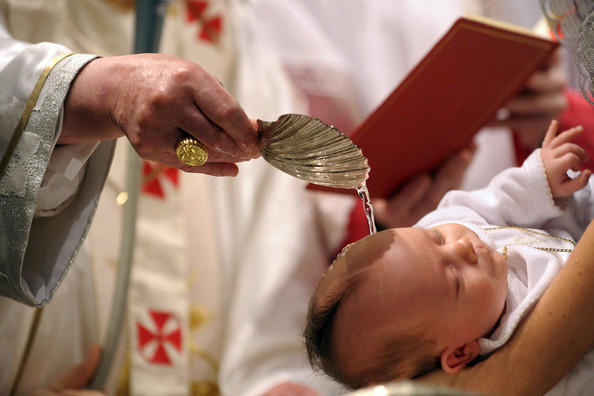The Amish and Mennonite communities share their origins in the 16th-century Anabaptist movement during the Protestant Reformation. These groups follow distinctly different paths in modern society, though they might look alike to outsiders at first glance. Their daily life approaches show substantial contrasts.
These communities’ biggest difference lies in their relationship with the modern world. The Amish community’s lifestyle rejects modern technology and remains more secluded. Mennonites embrace technology and modern conveniences in their daily routines. Mennonites’ homes feature motorized vehicles, electricity, and telephones, unlike their Amish counterparts. The communities’ educational practices also differ substantially – Amish children’s education stops at 8th grade, while Mennonite children often pursue higher education. Both groups stay committed to their faith traditions, though they express these beliefs differently in practice.

Shared Roots and the Historical Split
The Anabaptist movement started in 1525 as a radical wing of the Protestant Reformation and reshaped the Christian scene in Europe. A small group in Zurich sparked this movement when Conrad Grebel, Felix Manz, and George Blaurock baptized each other as adults on January 21, 1525. Their actions marked the start of what would become a powerful religious tradition.
The Anabaptist movement and adult baptism
Two main differences set Anabaptists apart from mainstream Christians. They chose adult baptism over the infant baptism common in Catholic and Protestant churches. They also stood firm on creating a “free Church” with no government control.
The name “Anabaptist” means “re-baptizer” – a label their opponents gave them because they baptized converts who had already received infant baptism. Anabaptists saw baptism as a conscious choice to follow Christ’s teachings, something babies couldn’t decide. This belief put their lives at risk, as Catholic and Protestant authorities saw rebaptism as worthy of death.
Anabaptists saw themselves as God’s kingdom’s citizens first, not subjects of earthly rulers. This bold stance led to brutal persecution across Europe. Catholics often burned these believers, while Protestants chose beheading or drowning.
Jacob Amman and the birth of the Amish
The split between Amish and Mennonite communities happened in 1693, long after the Anabaptist movement’s birth. Jakob Ammann, born in 1644, grew worried that the Mennonite church was becoming too worldly and losing its spiritual core.
Ammann and his fellow ministers sent a letter to Swiss Brethren congregations in 1693. They wanted to meet and clarify three key questions:
- Should they socially shun excommunicated members
- Should they excommunicate liars
- Could people find salvation without following God’s word through rebaptism
Hans Reist and other leaders disagreed with Ammann’s strict views, which caused a major split. Ammann then excommunicated Reist and his supporters, sending shockwaves through the Mennonite community. The conflict grew until almost half of all Mennonites faced excommunication.
The groups also clashed over foot washing during communion, how often to hold communion, and rules about dress and beards. The practice of shunning banned members remained the biggest source of conflict.
How Mennonites evolved separately
Hans Reist’s followers kept the Mennonite name and traditions after the split. Both groups tried to patch things up at first. Ammann even excommunicated himself and his followers in 1699 to show remorse, trying twice to reunite with the Mennonites. The Mennonites thought reunion was impossible because their beliefs stayed too different.
The Amish and Mennonites grew in different directions. Mennonites chose to welcome outside communities rather than staying isolated. While the Amish stayed spiritually focused by limiting modern contact, Mennonites believed in serving others in the wider world.
These days, Amish and Mennonites work together on business and charity projects in North America. The most conservative groups rarely share ministry or communion. Both communities still carry on the early Anabaptist movement’s legacy, each keeping their own take on shared religious beliefs.
Technology and Daily Life
Technology creates one of the most visible differences between Amish and Mennonite communities. Their unique approaches to modern conveniences come from their deep beliefs about community values and separation from the world.
Amish rejection of electricity and cars
Amish communities choose technology based on whether it helps or hurts their community. By 1920, they had rejected high-voltage electricity as a reaction against more liberal Amish and to avoid connections to the outside world. This wasn’t about seeing technology as evil but about keeping community boundaries intact.
Most Amish communities don’t allow car ownership, though they’ll hire drivers when needed. This creates a natural boundary—horses need rest after 25 miles, which limits community members to roughly 12.5 miles from home. Horse-drawn transportation keeps life at a slower pace, with buggies typically moving at 10 mph over long distances.
The Ordnung guides community standards and controls technology use. To name just one example, many Amish put telephones in separate buildings away from their homes, creating “phone shanties”. They can handle business needs while keeping communication technology from disrupting family life or replacing personal interactions.
Each community has its own rules. The Swartzentruber Amish are among the most conservative groups and don’t allow any electrical power sources in their homes. Some New Order Amish, however, let members use cell phones and pagers.
Mennonite acceptance of modern tools
In stark comparison to this, Mennonites don’t completely reject technology. Their approach varies widely, with three main responses: they either blend in, adopt some technology, or stay separate.
Most Mennonites use electricity, cars, and modern appliances, though acceptance varies between groups. Old Colony Mennonites and conservative Mennonite communities have stricter rules. Many of these groups separate technology for work from entertainment.
David Martin Mennonites show this balanced approach with computers. They keep them in barns or shops for business but not in homes. Markham-Waterloo Mennonites built their own server to control internet access. This shows how Mennonites adapt technology to match their values—a process they call “plainizing”.
How technology shapes community life
Both groups make technology decisions that strengthen their community values and structure. Amish people believe limits help build community, create belonging, and shape identity. Without these boundaries, they think people become arrogant and self-destructive.
Technology limits also affect how these communities do business. Amish entrepreneurs have created modified technologies for their communities. One makes “Classic Word Processors”—computers without internet—specifically for plain communities. Another builds hydraulic-powered equipment and metal tractor tires for conservative Amish settlements.
These choices about technology reflect each group’s relationship with society. Strict Amish communities stay mostly separate, while most Mennonite groups interact more with the outside world. As digital technology becomes crucial for taxes, banking, job applications and daily tasks, both communities keep evaluating which technologies to use, modify or avoid.
Both Amish and Mennonite communities show through their careful technology choices that what matters isn’t the technology itself, but how it affects their core values and lifestyle.
Clothing and Appearance
Clothing shows religious values in both Amish and Mennonite communities. Their unique dress codes show their deep faith in modesty, humility, and living apart from modern society.
Plain dress vs. modern modesty
The Amish follow strict dress rules that haven’t changed much over time. Men wear plain suits with broad-brimmed hats. Women dress in long gowns and bonnets. Their clothes are simple and modest. Men often wear suspenders and grow beards after marriage. Women’s outfits include dresses with capes and aprons.
Mennonite clothing styles range from traditional to modern. Some conservative Mennonites dress like the Amish in plain, modest clothes. Most modern-day Mennonites wear current styles with more freedom. Mennonite women might choose skirts and tops instead of traditional dresses. Some even wear pants or jeans.
Colors and patterns make a big difference between these groups. Amish clothes come in dark shades – purple, blue, wine, brown, grey, and black. Mennonites often pick brighter colors and patterns. Even their conservative members who stay modest usually wear more colorful clothes than the Amish.
Head coverings and their meanings
Head coverings stand out as the clearest way to tell these communities apart. Both groups use them to show submission and modesty. This practice comes from biblical teachings in 1 Corinthians 11, which tells women to cover their heads during prayer.
The Amish prayer covering (Kapp) looks different in each community. Lancaster County Amish women wear heart-shaped white coverings. Other Amish groups use straighter, pleated designs. Married women usually wear white bonnets over prayer coverings. Single women typically choose black ones.
Mennonite head coverings are smaller than Amish ones. Traditional Mennonite coverings look like stiff, pleated, round mesh. Less conservative Mennonite women might pin a doily-like covering to their hair. Some Mennonite groups no longer use coverings at all.
Visual cues to tell them apart
You can spot the difference between Amish and Mennonite clothing through several features:
- Buttons and fasteners: Amish people avoid decorative buttons. They use hooks and eyes, straight pins, or other closures. Mennonites use buttons, zippers, and modern fasteners freely.
- Head covering style: Lancaster, Pennsylvania’s communities are easy to identify by their headwear. Mennonites wear round, pleated mesh coverings. Amish women use heart-shaped white cloth coverings.
- Color palette: Amish people stick to solid, dark colors. Mennonites often wear prints, plaids, and brighter colors.
- Clothing modifications: Amish women keep their uncut hair in a braid or bun under their covering. Mennonite women usually tie their hair in neat buns but have more style options.
These visual differences show how each community views separation from modern life. Amish clothing stays almost the same through centuries. Mennonite practices range from very traditional to almost matching mainstream society.
Worship and Religious Practices
Religious gatherings show clear differences between Amish and Mennonite communities. These differences help us learn about their faith practices beyond what we can see on the surface.
Home-based vs. church-based services
The place where worship happens marks a key difference between Amish and Mennonite traditions. Amish families take turns to host worship services in their homes or barns every other Sunday. Their belief comes from Acts 17:24, which says God “does not dwell in temples made with hands.” These intimate gatherings usually bring together about 30 nearby households.
Mennonites choose to meet in dedicated church buildings. Conservative Mennonites who still use horse-and-buggy transport gather in simple white-frame meetinghouses. These buildings don’t have steeples or stained glass but include practical features like horse-tying racks and shelters to protect horses during cold weather.
Language used in worship
Both communities have unique ways of communicating during religious services. Amish people conduct their worship in Pennsylvania German (Dutch) or High German. This use of two languages stands as a symbol of their identity and connects them to their spiritual roots.
Mennonite services happen in the local language – English in North America or native languages in other countries. Modern Mennonite churches might use projectors or sound systems during their services.
Evangelism and missionary work
The biggest difference between Mennonite and Amish approaches shows in how they reach out to others. Amish communities prefer to show their faith through their daily lives rather than active preaching. One Amish man explained that talking about faith to strangers they might never see again doesn’t make sense to them.
Mennonites focus strongly on missionary work and have spread their faith to more than fifty countries. Many Mennonite groups work actively with society through charity and community programs. This outward focus shows their belief that worship should extend beyond church walls into everyday service.
These different worship practices show how each group balances their faith traditions while dealing with the outside world.

Community and Social Integration
The social structure shows a key difference when we look at what sets Amish and Mennonite communities apart. Both groups value strong family ties, but they differ in their approach to education, outside interactions, and gender roles.
Education and career paths
These communities have very different views on education. Amish children typically finish their schooling after 8th grade in one-room schoolhouses. They focus on practical skills and religious teachings. Young people learn through apprenticeships and family businesses after their formal education. Their simple curriculum covers reading, writing, arithmetic, and German language instruction.
Mennonites take a different approach and strongly support higher education. Their children often go to public schools and universities. Some Mennonite groups even run their own colleges. This choice about education shapes their career paths. Today’s Mennonites work in a variety of professional careers as doctors, lawyers, teachers, and engineers. The Amish community mostly works in farming, crafts, or small family businesses.
Interaction with non-members
The Amish keep themselves separate from the wider world. They allow friendships with non-Amish people, but stay mostly to themselves. Of course, outsiders can join the Amish community, but this rarely happens. The changes needed—giving up technology, wearing plain clothes, and accepting non-individualism—make it challenging for most people.
Progressive Mennonites blend smoothly with the general population. They regularly connect with non-Mennonites through their work and community activities.
Family roles and gender expectations
Traditional gender roles are strong in Amish communities. Men usually work in farming or crafts while women take care of households and children. Amish families tend to be large, with six to eight children on average.
Mennonite gender roles vary widely. Conservative groups follow traditional roles like the Amish, but progressive Mennonite women often have careers and pursue higher education. Both groups ended up emphasizing strong family bonds and multigenerational living arrangements, and they highly respect their elders.
Summing all up
The Amish and Mennonite communities share historical roots but have evolved quite differently over time. Both groups can trace their origins to the 16th-century Protestant Reformation. Their paths took separate directions after Jakob Ammann led the 1693 schism.
The Amish community has managed to keep strict boundaries with modern society. They don’t use electricity, cars, or most technology. Their lifestyle centers around traditional dress, home-based worship, and basic education. Mennonites, however, fall across a broad spectrum. Some conservative groups live much like the Amish, while progressive congregations blend seamlessly into mainstream society. This core difference shapes their entire way of life.
Each group’s relationship with the world stems from their unique interpretation of Christian values. The Amish believe separation and community preservation help them protect their spiritual values. Mennonites typically focus on service and participation in society, though their approach varies among different groups.
People often mix up these communities. A closer look at how they use technology, dress, worship, and structure their communities shows two distinct responses to their shared theological heritage. Both groups continue to flourish in modern America and provide alternative ways of faith-centered living in today’s secular world.
The Amish and Mennonites build on the same Anabaptist foundation. Yet their different paths show how religious communities can take similar principles and create lasting, unique cultures that span centuries.
Here are some FAQs about what is the difference between amish and mennonite:
What can Mennonites do that Amish can’t?
When examining what is the difference between Amish and Mennonite, Mennonites typically have more freedom to use modern technology like cars and electricity. The mennonite vs amish comparison shows Mennonites often participate more in mainstream society while maintaining their faith. What is the difference between a mennonite and an amish becomes clear in education too, as Mennonites frequently attend public schools and colleges.
Can a Mennonite marry an Amish?
While exploring what is the difference between mennonite and amish, intermarriage is rare but not impossible between the groups. The amish vs mennonite traditions differ significantly enough that such unions would require substantial compromise. What is the main difference between amish and mennonite often makes cross-cultural marriages challenging, though not expressly forbidden in all communities.
Are Mennonites or Amish stricter?
In the mennonite vs amish comparison, the Amish generally maintain stricter rules regarding technology and separation from society. What is the difference between a mennonite and amish shows in dress codes, with Amish adhering to more uniform, traditional clothing. The amish vs mennonite lifestyle differences typically place Amish communities as more conservative in most aspects of daily living.
What are Amish bedroom rules?
While discussing what is the difference between mennonite and amish, Amish bedroom rules reflect their emphasis on modesty and procreation. The amish vs mennonite comparison shows Amish typically practice stricter gender separation and earlier bedtimes. What is the difference between a mennonite and an amish includes these private life regulations that Mennonites generally don’t observe.
Do Mennonites have multiple wives?
Neither group practices polygamy, which clarifies what is the difference between amish and mennonite versus other religious groups. The mennonite vs amish comparison shows both follow traditional Christian marriage norms of one spouse. What is the main difference between amish and mennonite doesn’t include marriage structure, as both strictly observe monogamy.
Why are there Mennonites in Mexico?
Understanding what is the difference between a mennonite and amish includes their migration patterns – Mennonites moved to Mexico seeking religious freedom and farmland. The amish vs mennonite settlement history shows Mennonites were more willing to relocate internationally. What is the difference between mennonite and amish becomes evident in their global presence, with Mennonites establishing communities worldwide.
Can Amish girls date non-Amish guys?
The amish vs mennonite comparison shows Amish typically prohibit dating outside their faith, unlike some Mennonite groups. What is the difference between a mennonite and amish includes these courtship rules, with Amish maintaining stricter endogamy. What is the main difference between amish and mennonite often appears in marriage practices, where Amish almost exclusively marry within their community.








